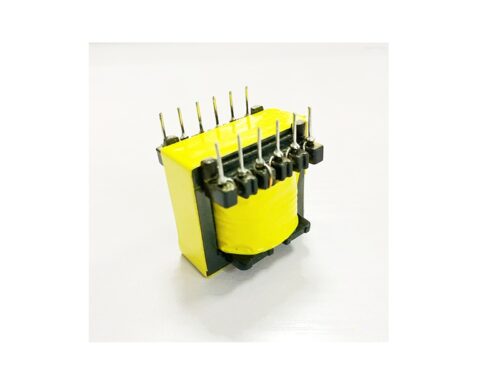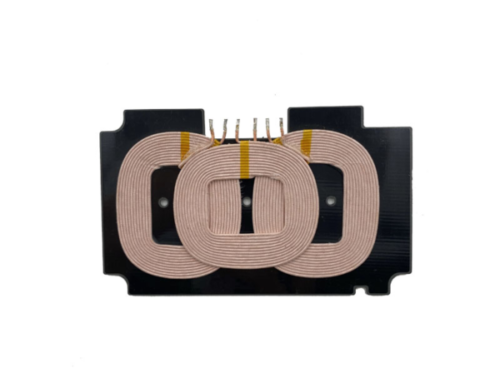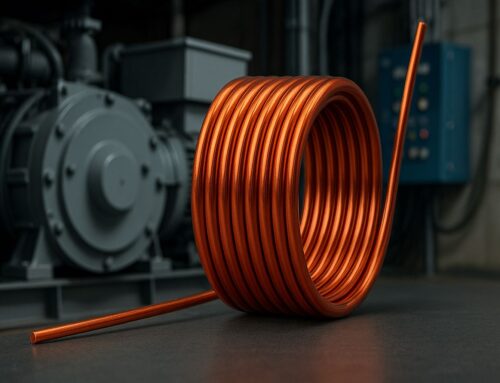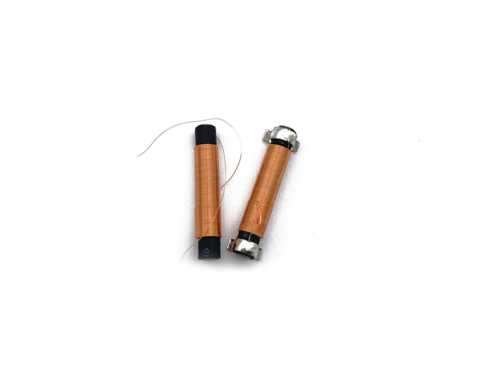As the world transitions toward greener energy solutions, innovations in wireless charging technology are paving the way for more sustainable and efficient energy usage. One of the key technologies that has driven the advancement of wireless charging is USTC wire winding. Advanced winding technology has significantly enhanced the performance and sustainability of wireless charging systems. By improving energy transfer efficiency, reducing waste, and optimizing charging speeds, USTC wire winding is playing a crucial role in making wireless charging not only more effective but also more environmentally friendly.
In this article, we will explore how USTC wire winding technology enhances the sustainability of wireless charging systems. We will dive into the technical aspects of wire winding, how it improves energy efficiency, and how it contributes to the overall eco-friendliness of wireless charging. Additionally, we will discuss the long-term environmental benefits of adopting USTC wire winding in electric vehicle (EV) charging and other applications. This article will also include insights into the latest advancements in wireless charging, and how they contribute to the broader goal of sustainable energy usage.


1. Introduction to Wireless Charging and Sustainability
The development of wireless charging technology has transformed the way we think about powering up our devices, from smartphones to electric vehicles (EVs). Wireless charging eliminates the need for physical cables, offering convenience and efficiency. However, as the world becomes more energy-conscious, sustainability is becoming a critical factor in the adoption of new technologies. Wireless charging must not only be effective and fast but also environmentally sustainable to align with global goals for green energy.
Sustainability in wireless charging is about reducing energy consumption, minimizing waste, and ensuring that the technology is energy-efficient throughout its lifecycle. This is where USTC wire winding technology plays a crucial role. By enhancing the energy transfer process, USTC wire winding makes wireless charging more efficient, reducing the carbon footprint of charging systems.
2. What is USTC Wire Winding Technology?
USTC’s coil winding technology refers to the precise process of winding wires into coils, which are then used in wireless charging systems. This process is crucial for creating inductive coils that facilitate magnetic induction—the mechanism by which wireless energy transfer occurs. USTC’s innovative coil winding method involves fine-tuning the coil designs to optimize energy efficiency and reduce power loss during energy transfer.
At the core of this technology are the coils, which are wound with precision to maximize the magnetic coupling between the transmitter and receiver. USTC’s coil winding process ensures that the coils are designed to reduce energy dissipation, thereby improving the overall efficiency of the wireless charging system. This is especially beneficial in applications such as electric vehicle (EV) charging, where fast and energy-efficient charging is essential.
3. The Role of USTC Wire Winding in Wireless Charging
3.1 Improved Energy Transfer Efficiency
Energy transfer efficiency is a key factor in the sustainability of wireless charging systems. Inefficiencies in the transfer process can lead to energy losses, which not only waste power but also increase the environmental impact of the charging system. USTC wire winding addresses this issue by optimizing the design of the coils, ensuring that energy is transferred more efficiently between the charging pad and the device.
By fine-tuning the winding process and optimizing the coil’s geometry, USTC ensures that the magnetic field is more uniform and stable. This increases the amount of energy transferred to the receiver, reduces energy loss, and ensures faster and more efficient charging.
3.2 Reducing Energy Losses
One of the primary goals of USTC wire winding technology is to reduce energy losses during the charging process. Traditional wireless charging systems often suffer from significant energy loss due to inefficient coil designs and poor alignment between the transmitter and receiver. USTC wire winding improves the performance of the coils by optimizing their shape, size, and material to minimize these losses.
The result is a wireless charging system that uses less energy to achieve the same results. With USTC wire winding, the charging process becomes more efficient, reducing the overall carbon footprint of the system.
3.3 Compact and Eco-Friendly Design
In addition to improving efficiency, USTC wire winding technology also contributes to the eco-friendliness of wireless charging systems by enabling compact and space-efficient designs. Traditional charging systems often require bulky components, which can be difficult to manage and recycle at the end of their lifespan. USTC wire winding allows for the creation of smaller, lighter coils, which can fit into more compact charging pads, making them easier to integrate into a variety of devices.
This reduction in size and weight also helps in reducing material waste, as less material is required to manufacture the coils. This compact design, combined with energy-efficient functionality, enhances the sustainability of wireless charging systems.
4. Benefits of USTC Wire Winding for Sustainable Charging
a) Improved Efficiency and Reduced Energy Consumption
The most significant benefit of USTC wire winding technology is the improved efficiency of wireless energy transfer. By minimizing energy loss and improving the coupling between transmitter and receiver coils, the system uses less energy to charge devices. This not only reduces electricity consumption but also lowers operating costs, which is crucial in large-scale deployments such as EV charging stations.
b) Longer Product Lifespan
The precision of USTC’s coil winding process also extends the lifespan of wireless charging systems. By using high-quality materials and ensuring proper coil alignment, USTC’s advanced winding technique reduces wear and tear on the coils. This results in a more durable product that lasts longer, reducing the need for frequent replacements and minimizing waste.
c) Eco-Friendly Materials
USTC wire winding technology often incorporates eco-friendly materials in the manufacturing of coils. This contributes to the overall sustainability of wireless charging systems, as these materials can be recycled at the end of the product’s life, further reducing the system’s environmental impact.
5. Energy Efficiency and Faster Charging
Another benefit of USTC’s coil winding technology is its ability to optimize charging speeds while maintaining energy efficiency. Faster charging is a critical component of making wireless charging more practical for everyday use, especially in applications such as electric vehicle charging.
With USTC’s advanced winding process, the coils are designed to allow for faster energy transfer without compromising efficiency. The system can charge devices, including electric vehicles, more quickly while using less energy. This makes wireless charging a more viable alternative to traditional charging systems, as it can be implemented on a larger scale with reduced energy consumption.
6. Reducing Environmental Impact Through USTC Wire Winding
Sustainability is at the core of USTC’s coil winding technology. By improving energy efficiency, reducing material usage, and extending the lifespan of charging systems, USTC’s winding process directly contributes to reducing the environmental impact of wireless charging.
The ability to transfer energy more efficiently also means that less power is required from non-renewable sources, reducing carbon emissions. As more electric vehicles adopt wireless charging, the use of USTC’s advanced coil winding techniques can help meet global sustainability targets by reducing the environmental footprint of charging infrastructure.
7. Comparison with Traditional Charging Methods
Traditional plug-in charging systems often rely on large amounts of energy and involve physical connectors that degrade over time, resulting in higher maintenance costs and energy losses. In contrast, USTC’s coil winding systems use inductive energy transfer, which is more efficient and doesn’t require physical connectors, reducing wear and tear.
Wireless charging also allows for greater flexibility in terms of design and usage. Traditional charging systems often require bulky cables and connectors, which can lead to clutter and potential damage. With USTC’s advanced coil winding technology, the charging process is simplified, making it more convenient and environmentally friendly.
8. The Future of Wireless Charging and USTC Wire Winding
The future of wireless charging is bright, with USTC wire winding technology playing a key role in the advancement of energy-efficient, sustainable solutions. As electric vehicles become more prevalent, wireless charging will need to meet the increasing demand for faster, more efficient charging systems. USTC wire winding technology is ready to meet these demands, helping create a more sustainable charging infrastructure worldwide.
Future innovations in USTC wire winding may lead to even more compact designs, improved material efficiency, and faster charging speeds. These advancements will make wireless charging systems more accessible and environmentally friendly, contributing to a greener future.
9. Conclusion
USTC wire winding technology has a transformative impact on the sustainability of wireless charging systems. By improving energy efficiency, reducing material waste, and enabling faster charging, USTC wire winding helps to create a more eco-friendly and cost-effective solution for electric vehicle charging and other applications. As wireless charging continues to grow in popularity, the role of USTC wire winding in enhancing sustainability will only become more crucial, making it an integral part of the future of green energy solutions.





Leave A Comment